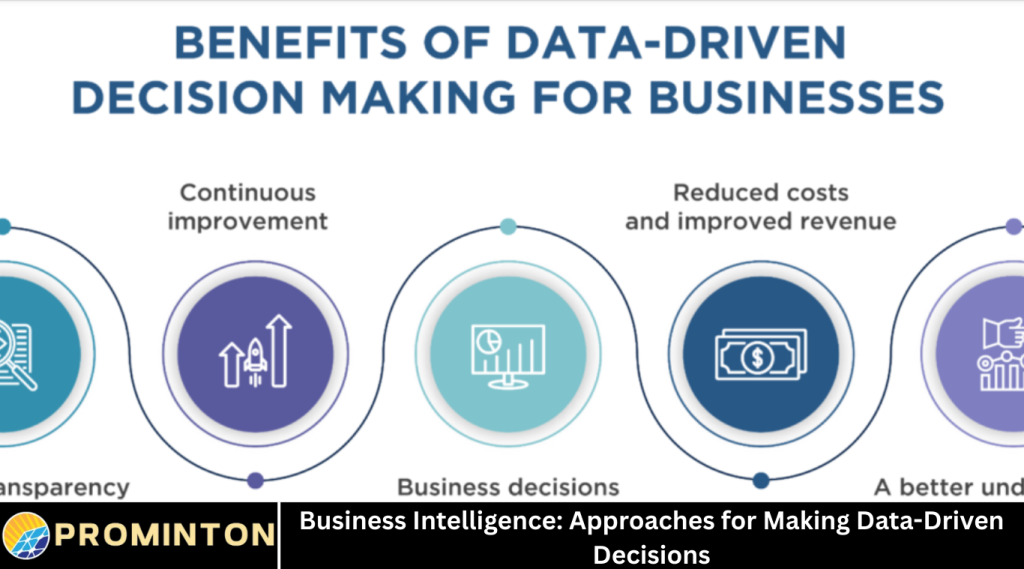In today’s fast-paced and competitive business environment, making informed decisions is more important than ever. Companies that rely on intuition or guesswork risk falling behind. Business Intelligence (BI) offers a way to leverage data to guide strategy, improve operations, and enhance overall performance.
Business Intelligence involves collecting, analyzing, and presenting data to help organizations make better decisions. It turns raw data into meaningful insights, allowing decision-makers to understand trends, identify opportunities, and solve problems efficiently.
This article explores key approaches in business intelligence that organizations can use to foster data-driven decision-making. It explains how businesses can gather relevant data, analyze it effectively, and use insights to improve outcomes.
Understanding Business Intelligence
Business Intelligence refers to technologies, applications, and practices for collecting and analyzing business information. The goal is to support better decision-making through timely, accurate, and actionable data.
BI includes many tools and techniques such as data warehousing, reporting, analytics, and dashboards. It spans various business functions including sales, marketing, finance, operations, and customer service.
Using BI, companies gain a clearer picture of their performance, customer behavior, and market conditions. This clarity enables them to make strategic moves with confidence.
Data Collection Strategies
Accurate and relevant data is the foundation of effective business intelligence. Companies need to gather data from multiple sources such as internal databases, customer feedback, social media, and market research.
Data can be structured, like sales records or inventory logs, or unstructured, like emails and social media posts. Collecting diverse data types provides a fuller understanding of the business landscape.
Automation tools and software can streamline data collection, reducing errors and saving time. Establishing clear data governance ensures data quality and security.
Data Storage and Management
Once data is collected, it must be stored and managed efficiently. Data warehouses and data lakes are common storage solutions that organize data for easy access and analysis.
Proper data management includes cleaning data to remove duplicates, errors, and inconsistencies. Well-organized data allows analysts to work more effectively and generate reliable insights.
Cloud storage options offer scalability and flexibility, enabling businesses to handle large volumes of data without significant upfront investment.
Data Analysis Techniques
Data analysis transforms raw data into actionable insights. Different analytical approaches serve different purposes.
Descriptive analysis helps understand what happened by summarizing past data. Predictive analysis uses statistical models and machine learning to forecast future trends. Prescriptive analysis recommends actions based on data outcomes.
Visualization tools like charts and dashboards make complex data easier to understand. These visual representations help stakeholders quickly grasp key information.
Leveraging Key Performance Indicators (KPIs)
Key Performance Indicators (KPIs) are measurable values that show how well a company is achieving its objectives. Selecting the right KPIs aligns data analysis with business goals.
KPIs vary by industry and function. Examples include sales growth, customer retention rate, and operational efficiency. Regularly monitoring KPIs helps organizations stay on track and adjust strategies as needed.
Building a Data-Driven Culture
Technology alone cannot make a business data-driven. Leadership must foster a culture that values data and encourages its use in decision-making.
Training employees to understand and trust data is essential. Transparent communication about data insights promotes collaboration and innovation.
Organizations should also establish processes for using data in planning and problem-solving to make BI part of everyday work.
Tools and Technologies in Business Intelligence
There are many BI tools available that support data analysis and reporting. Popular platforms include Microsoft Power BI, Tableau, and Qlik Sense.
These tools offer user-friendly interfaces, interactive dashboards, and integration with various data sources. Choosing the right tools depends on business needs, size, and budget.
Artificial Intelligence and machine learning are increasingly integrated with BI tools to enhance predictive capabilities and automate analysis.
Challenges in Implementing Business Intelligence
Implementing BI comes with challenges. Data privacy and security are critical concerns, requiring robust measures to protect sensitive information.
Data silos, where departments store data separately, hinder comprehensive analysis. Integrating data sources across the organization is necessary but can be complex.
Another challenge is ensuring data quality and consistency. Poor data leads to unreliable insights and bad decisions.
Measuring the Impact of Business Intelligence
To justify investment in BI, organizations should measure its impact on performance. This includes tracking improvements in decision-making speed, accuracy, and business outcomes.
Success can be seen in increased revenue, reduced costs, better customer satisfaction, and enhanced operational efficiency.
Continuous evaluation helps identify areas for improvement and keeps BI efforts aligned with evolving business goals.
Future Trends in Business Intelligence
The future of BI is shaped by advancements in technology and changing business needs. Real-time analytics will become more common, enabling instant decisions.
Augmented analytics, which uses AI to assist users in data preparation and insight generation, will make BI more accessible.
Data storytelling and natural language processing will help communicate insights more effectively to non-technical audiences.
Frequently Asked Questions
What is business intelligence?
Business Intelligence is the use of technologies and practices to collect, analyze, and present business data to support better decision-making.
How does business intelligence help decision-making?
BI turns raw data into meaningful insights, allowing businesses to understand trends, forecast outcomes, and make informed choices.
What types of data are used in business intelligence?
Both structured data like sales numbers and unstructured data like customer reviews are used to provide a complete view of business performance.
What are Key Performance Indicators?
Key Performance Indicators are measurable values that track progress towards specific business goals.
What challenges do businesses face with BI?
Common challenges include ensuring data quality, integrating data from different sources, and maintaining data security.
How can companies build a data-driven culture?
Leadership should promote data use, provide training, and integrate data into everyday decision-making processes.
What is the future of business intelligence?
Future BI will focus on real-time data, AI-driven analytics, and improved ways to communicate insights across organizations.
Conclusion
Business Intelligence is a powerful approach that helps organizations make smarter, data-driven decisions. By collecting and analyzing data effectively, companies gain valuable insights that improve strategy, operations, and competitiveness.
Successful BI requires not just technology but also a culture that embraces data at every level. With the right tools, processes, and mindset, businesses can unlock the full potential of their data.



